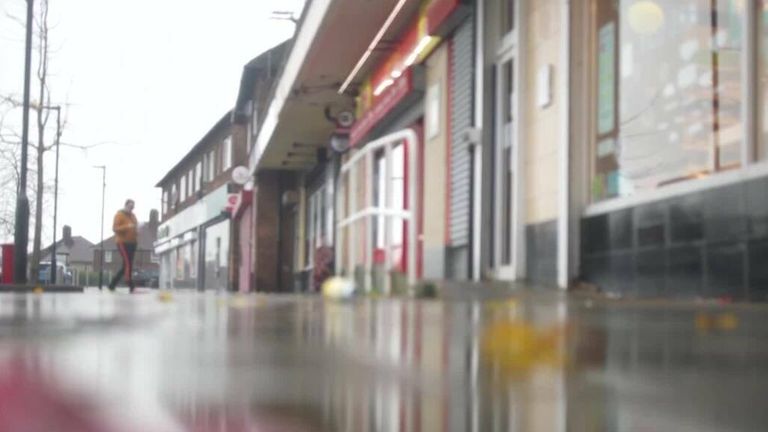Review Of The Brooklyn Bridge's Structural Integrity

Table of Contents
Historical Context and Initial Design
The Brooklyn Bridge, a marvel of 19th-century engineering, was a groundbreaking achievement. Its construction, spearheaded by John A. Roebling and later his son Washington Roebling, overcame numerous challenges. The innovative cable-stayed design, utilizing steel wires and a revolutionary system of suspension cables, was a significant leap forward in bridge construction. The original design specifications called for specific materials and construction techniques, many of which were innovative for their time.
- Original design specifications and materials: The bridge utilized high-tensile steel wire for its cables, a material relatively new at the time. The towers were constructed primarily of limestone, granite, and concrete.
- Challenges faced during construction: The project faced significant hurdles, including the deaths of John A. Roebling and numerous workers due to accidents and disease (caisson disease). The immense scale of the project and the novel engineering required immense skill and dedication.
- Innovative engineering solutions used: The use of compressed air caissons for underwater foundation work was a crucial innovation that enabled the construction of the bridge's massive foundations. The use of steel wire cables was also highly innovative.
- Early maintenance practices: Early maintenance focused primarily on addressing immediate repairs and replacing worn-out components. Comprehensive, preventative maintenance programs as we understand them today were not yet established.
Modern Inspection and Maintenance Techniques
Maintaining the Brooklyn Bridge's structural integrity requires sophisticated, modern inspection and maintenance techniques. Regular assessments are crucial for ensuring the bridge's continued safe operation. These methods focus on detecting and addressing potential issues before they become major problems.
- Types of non-destructive testing (NDT) used: Modern inspections employ a range of non-destructive testing (NDT) methods, including visual inspection, ultrasonic testing, and ground-penetrating radar to assess the condition of the cables, towers, and other structural elements. These techniques allow engineers to evaluate the structural health without damaging the bridge itself.
- Frequency of inspections and their scope: Regular inspections are conducted, including detailed assessments that focus on specific areas. The frequency varies depending on the nature of the inspection.
- Strategies for preventing corrosion and deterioration: Corrosion prevention is a key aspect of bridge maintenance, including applying protective coatings and implementing cathodic protection systems to slow down deterioration.
- Details about recent repairs and maintenance projects: Ongoing maintenance includes the regular replacement of worn-out components, such as suspender ropes, and the implementation of proactive strategies for mitigating potential problems.
Assessment of Current Structural Integrity
The Brooklyn Bridge undergoes rigorous assessments to determine its current structural health. These assessments provide valuable data on its load capacity, safety rating, and overall condition. While the bridge shows its age, ongoing maintenance and modern inspection techniques have helped maintain its structural integrity.
- Overall assessment of the bridge's current condition: Recent inspections indicate that the bridge remains structurally sound and capable of carrying its design load.
- Discussion of any identified structural weaknesses: While generally sound, localized areas of deterioration are addressed promptly through targeted repairs.
- Analysis of the bridge's load-carrying capacity: The bridge's load capacity is regularly assessed and compared to actual traffic loads. This ensures it can safely accommodate current and projected traffic volumes.
- Projected lifespan and potential future maintenance needs: With ongoing maintenance, the Brooklyn Bridge is expected to remain a safe and functional transportation link for many years to come. However, continued investment in maintenance and upgrades is crucial for extending its lifespan.
Future Plans and Sustainability
Long-term plans for the Brooklyn Bridge prioritize sustainable practices and future-proofing. Addressing potential future challenges, such as climate change and increased traffic, is paramount for ensuring its continued functionality.
- Long-term maintenance strategies: A robust long-term maintenance plan is in place to address identified needs and ensure the bridge remains structurally sound for decades to come.
- Incorporation of sustainable materials and practices: Efforts are underway to incorporate sustainable materials and practices into ongoing maintenance and future upgrades.
- Plans for addressing the impact of climate change: Strategies are in place to mitigate the effects of climate change, such as strengthening protection against extreme weather events.
- Strategies for managing increased traffic loads: Continued monitoring and adjustments to traffic management are employed to ensure the bridge remains safe under increasing traffic volumes.
Conclusion
The Brooklyn Bridge's structural integrity is a testament to ongoing maintenance and modern engineering practices. While age and environmental factors pose challenges, continuous monitoring, proactive maintenance, and strategic planning are crucial for preserving this iconic landmark. The bridge remains a safe and reliable transportation link, and through dedicated efforts, its structural integrity will be maintained for generations to come. Learn more about the ongoing efforts to preserve the Brooklyn Bridge's structural integrity and ensure its continued legacy for years to come.

Featured Posts
-
 Pripremna Utakmica Srbije Za Evrobasket Izvestaj Iz Bajernove Dvorane
May 18, 2025
Pripremna Utakmica Srbije Za Evrobasket Izvestaj Iz Bajernove Dvorane
May 18, 2025 -
 Complete Spring Breakout Rosters 2025 Player Lists And Team Analysis
May 18, 2025
Complete Spring Breakout Rosters 2025 Player Lists And Team Analysis
May 18, 2025 -
 The Financial Squeeze On Universities Impacts On Faculty Staff And Students
May 18, 2025
The Financial Squeeze On Universities Impacts On Faculty Staff And Students
May 18, 2025 -
 Tony Gonsolins Strong Return Dodgers Extend Winning Streak To Five
May 18, 2025
Tony Gonsolins Strong Return Dodgers Extend Winning Streak To Five
May 18, 2025 -
 Canterbury Castle Sold For 705 499 A New Chapter Begins
May 18, 2025
Canterbury Castle Sold For 705 499 A New Chapter Begins
May 18, 2025
Latest Posts
-
 Jennifer Aniston Sends Birthday Wishes To Pedro Pascal Amidst Dating Speculation
May 18, 2025
Jennifer Aniston Sends Birthday Wishes To Pedro Pascal Amidst Dating Speculation
May 18, 2025 -
 Fans Speculate Did Pedro Pascal Get Jaw Surgery Or Use Ozempic
May 18, 2025
Fans Speculate Did Pedro Pascal Get Jaw Surgery Or Use Ozempic
May 18, 2025 -
 Pedro Pascals 2025 Domination Starts Next Week
May 18, 2025
Pedro Pascals 2025 Domination Starts Next Week
May 18, 2025 -
 Pedro Pascals New Jawline Plastic Surgery Or Ozempic
May 18, 2025
Pedro Pascals New Jawline Plastic Surgery Or Ozempic
May 18, 2025 -
 2025 The Year Of Pedro Pascal Begins Next Week
May 18, 2025
2025 The Year Of Pedro Pascal Begins Next Week
May 18, 2025
